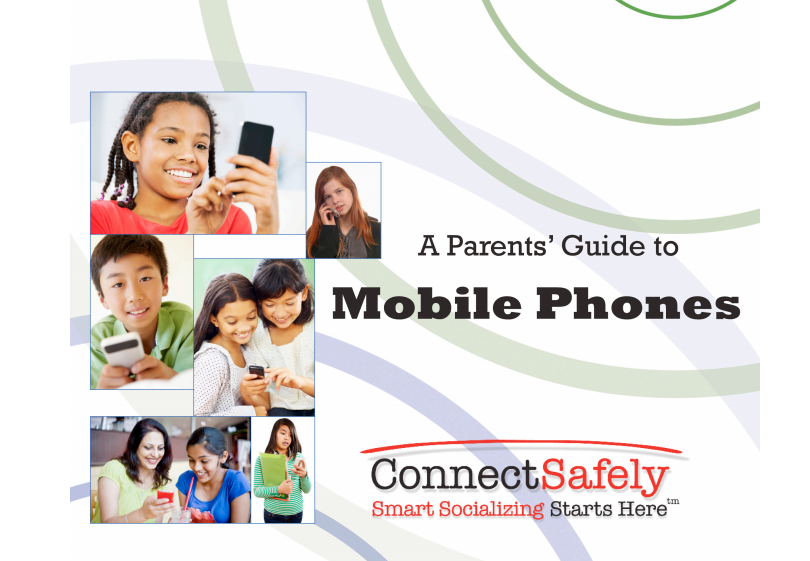
This article first appeared in the San Jose Mercury News
I recently helped write a free online booklet called “A Parents’ Guide to Mobile Phones,” available at connectsafely.org/mobile, but much of the advice applies to all cellphone users. Were it not for some parenting tips such as the section on buying a child’s first phone, it could just as easily have been titled “A mobile users’ guide to reducing risk.”
Notice I said “reducing risk,” not eliminating it. When it comes to safety, security and privacy, the best we can do is to take reasonable precautions to reduce the chances of something bad happening. Just as with cooking, driving or getting out of bed, there is no way to completely eliminate risk. And, when talking about risk, it’s important to distinguish between risk and harm. I know this seems obvious, but when it comes to technology dangers, some people forget that just because something can happen, doesn’t mean it likely will.
There was a time when the cellphone carriers had complete control over what people did with their phones. I’d hate to go back to that time, but along with the freedom that allows developers to create apps comes the increased risk of problems associated with those apps. Cellular carriers are still a big part of the mobile phone ecosystem, but so are handset or operating system companies like Apple, Samsung, Google and Microsoft, along with hundreds of thousands of app developers. But, as we point out in our mobile guide “There are two other very important players in this ecosystem where families are concerned: you and your children. More than ever, it’s up to the user to determine what to do with a smartphone.”
Some of the risks associated with mobile phones are similar to the Web or any other connected technology. We need to be careful about what information we share, how we treat people via text messaging, email and social networks, and to guard against allowing phone use to interfere with other activities, including school, work, sleep or in-person time with friends and family. And, as with all communication devices, try to avoid any online scams.
But mobile phones have other risks, such as location awareness and the fact that they are more easily lost, stolen or broken than devices that are tethered to a wall plug.
All mobile phones know your location, which was originally mandated for use by 911 operators to locate a caller in an emergency. But today, location services are used by all sorts of apps ranging from navigation programs like Google Maps to friend-finder services to games. Last year, the Federal Trade Commission reached a settlement with a flashlight app maker that allegedly “failed to disclose that the app transmitted users’ precise location and unique device identifier to third parties, including advertising networks.”
When downloading any app, look for the section on permissions to find out what information it has access to. Facebook Messenger, for example, “needs access” to identify contacts, calendar, location, Wi-Fi information and a lot more. These permissions actually make sense, but it’s hard to understand why a flashlight app would need to know your location. It would be unrealistic to expect people to spend a lot of time vetting every app they download, but it’s a good idea to at least read the description, the list of permissions it needs and maybe a few of the reviews in the app store before you download an app that you’re not sure about.
Be aware that apps can cost you money — sometimes for the app itself and sometimes for “in-app purchases.” Parents need to establish rules
It’s also important to lock your phone. All smartphones have some type of locking system, such as a PIN number, a password, a gesture or a fingerprint reader. Locking a phone protects your privacy and keeps others from making calls, sending texts or using apps in your name. I have heard cases of people getting in trouble or being embarrassed because of things other people did with their phone.
A good case can help prevent breakage but a phone-finder app can help you locate it if it’s lost or stolen. iPhone users should be sure to enable the Find My iPhone feature and Android users should be aware of the Android Device Manager. Both of these built-in apps allow you to locate the phone, cause it to ring at the loudest volume even if the ringer is turned off and remotely lock or erase a phone’s content from any Web-enabled device. It’s been awhile since I’ve lost a phone, but I misplace mine frequently and often use these services to locate my phone when it’s between the couch cushions or under a stack of paper in my office. The feature only works if the phone is turned on with a working battery and in range of a signal. If the phone is off, the ringer will sound or the phone can be locked or erased as soon as it’s powered up, which won’t help if it’s missing, but will if someone else finds it and turns it on.
These features can also be used to locate a person if you know their password. The iPhone has aFind My Friends app that you can use to let someone track you and there are other available tracking apps including Glympse for iPhone and Android and Find My Friends for Android.